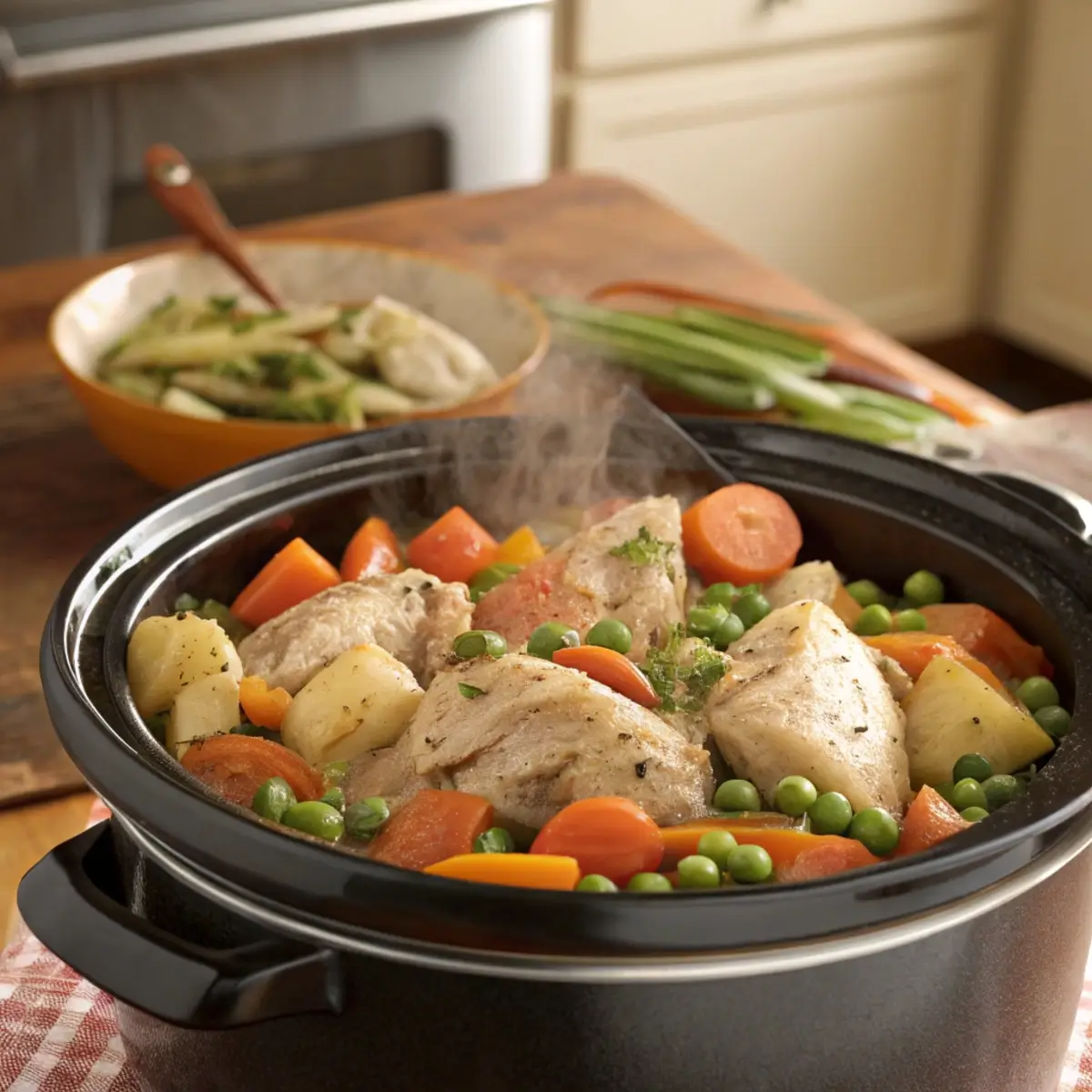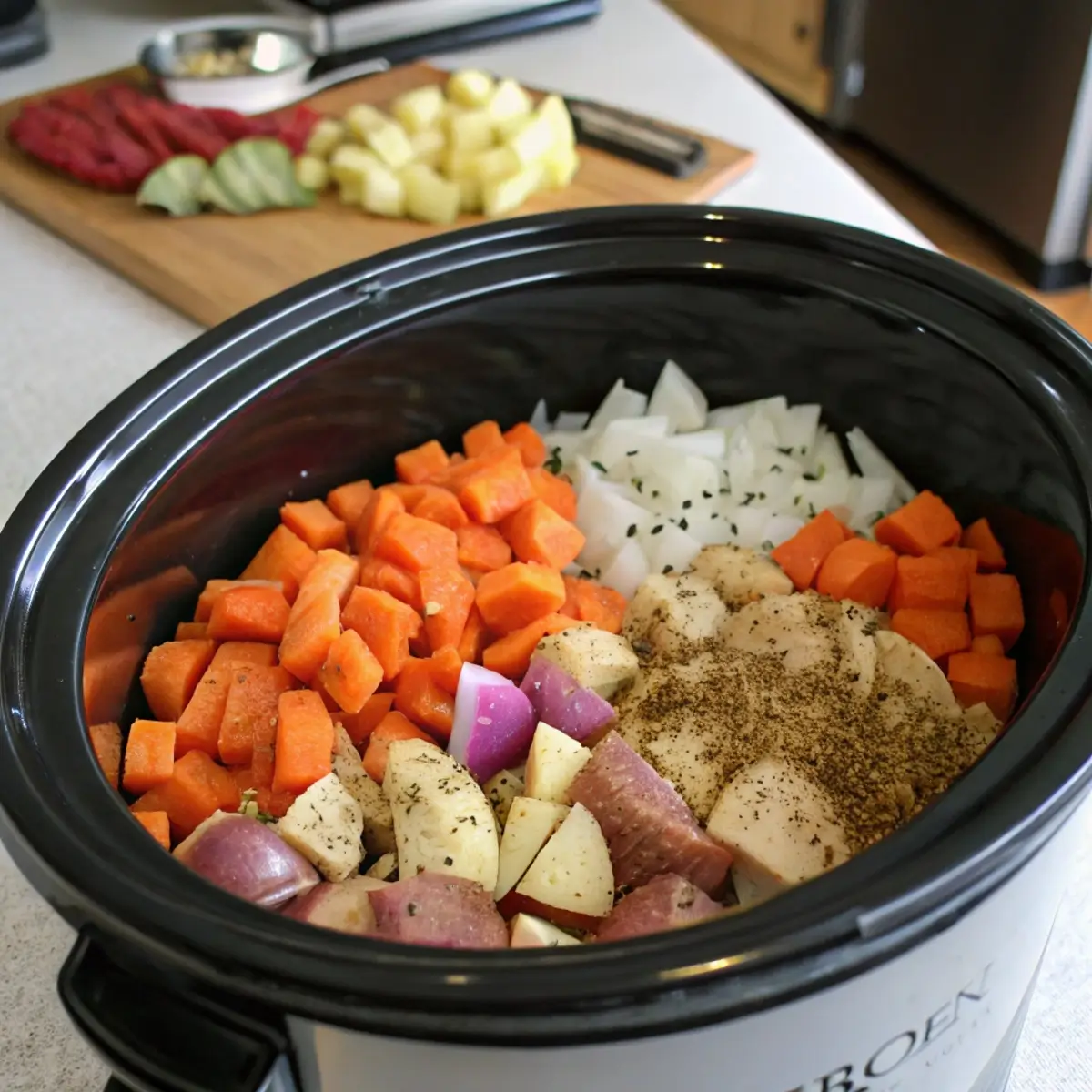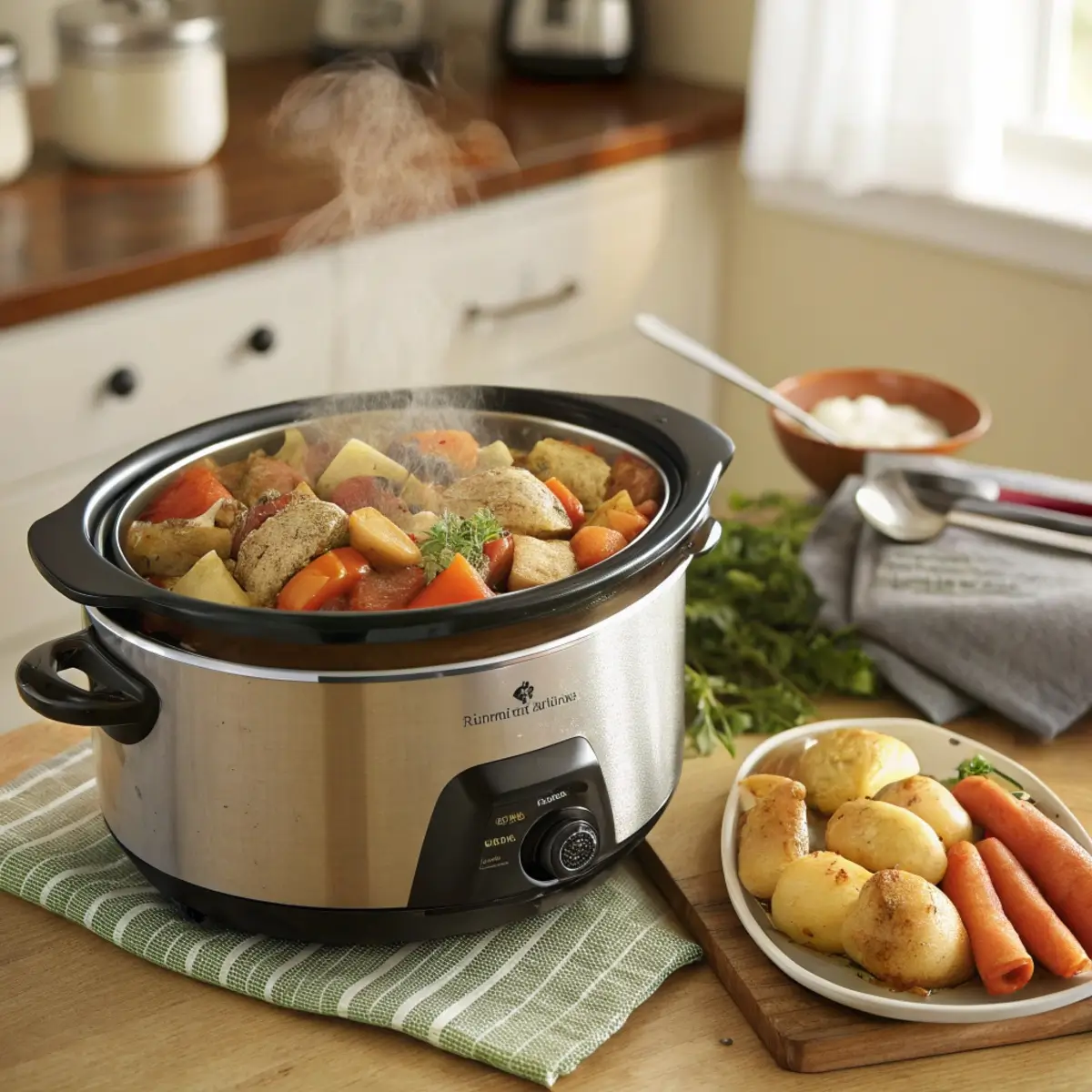Table of Contents
In the heart of Southern cuisine lies a debate as rich and thick as the dishes it concerns: Sausage and Country Gravy. Both are cornerstones of a traditional breakfast that’s beloved across the region, but despite their shared stage atop biscuits, they hold distinct places in culinary history and on the taste buds of those who enjoy them. This exploration will dive deep into the textures, flavors, and origins that define these comforting gravies, unraveling the thread of similarity to discover what truly sets them apart.
Overview of Sausage vs. Country Gravy
Imagine a scene: a warm, fluffy biscuit, steam rising. Picture it smothered in creamy gravy. But which kind? Is it hearty, meat-filled sausage gravy? Or the smooth, comforting country gravy? Both gravies have champions. The choice is not just about taste. It’s about tradition and preference too.
Southern cuisine offers diverse, storied dishes. Among these, biscuits and gravy stand out. They’re simple, yet comforting. Yet, this dish hides a world of variation. Especially when comparing sausage to country gravy.
In this article, we’ll explore the heart of the South. We’re looking into the origins, ingredients, and techniques behind these gravies. From sausage gravy’s smoky depths to country gravy’s velvety smoothness, we’ll see what makes each unique.
So, join us on this flavorful journey. It’s for anyone who loves cooking and eating well. Grab a fork (and maybe a biscuit or two). Let’s dive into Sausage vs. Country Gravy. Every spoonful tells a story. Every bite is a taste of the South.
Stay tuned. We’re tracing these gravies’ historical roots next. We’ll see how they became Southern staples we love today.
Historical Background
Origins of Biscuits and Gravy
Delving into the origins of biscuits and gravy transports us to a time when meals were about sustenance, practicality, and making the most of available resources. It’s a story deeply embedded in the Appalachian Mountains, a region where the simplicity of food belied the richness of its community and culture. The late 19th century saw this humble dish emerge as a staple, offering mill workers a filling, low-cost meal that provided the necessary calories for their long, laborious days.
The Role of Beef in Southern Cooking
In the kitchens of early America, beef was the protein of choice, not just for its affordability but for its versatility. Ground beef sausage, in particular, became the foundation of the traditional gravy that soaked into the soft, warm biscuits. This choice was more than a matter of taste; it was a reflection of the era’s economic realities and the ingenuity of Southern cooks who made deliciousness out of necessity.
Evolution of Gravy Varieties in the South
As biscuits and gravy gained popularity in the South, the dish evolved. It took on new forms, each with local flavors. The culinary landscape of the region flourished. Yet, sausage and country gravies stayed central to breakfast. Both gravies evolved, maintaining their places at the table.
Each gravy showcases Southern cuisine’s diversity. This diversity is a tapestry of flavors, shaped by geography and history. It’s also crafted by generations of cooks. Understanding these gravies enriches our appreciation. It connects us to the rich stories and traditions of Southern cooking.
Now, let’s explore sausage gravy’s distinctive qualities. It differs significantly from its country cousin. Food is more than just sustenance. It tells stories of survival, adaptation, and culture. In the next section, we’ll reveal sausage gravy’s secrets. It’s a testament to Southern culinary legacy.
Understanding Sausage Gravy
What Makes Sausage Gravy Unique?
Sausage gravy, with its rich, meaty texture and deep flavors, is a testament to the power of simplicity in cooking. This beloved variant is defined by its primary ingredient: ground sausage, which is browned to perfection before being transformed into a velvety sauce. The sausage not only imparts a smoky depth to the gravy but also serves as the foundation of its thickening mechanism when combined with flour and milk. It’s a symphony of flavors that sings of comfort and home.
Ingredients and Preparation
The art of making sausage gravy is a dance of balance and timing. Starting with the sausage, cooked until it’s just the right shade of golden, each step builds on the last. The flour is then sprinkled over, absorbing the fat and creating a roux that will thicken the milk into a creamy embrace. Seasonings—often a simple dash of salt and a generous helping of black pepper—add the final touch, elevating the gravy from a mere sauce to a main event.
Serving Suggestions Beyond Biscuits
While traditionally ladled over split, warm biscuits, sausage gravy’s versatility shouldn’t be underestimated. It finds harmony atop a slice of toast, adds a comforting layer to mashed potatoes, and can even transform a breakfast casserole into a dish worth waking up for. Its robust flavor profile makes it a hearty companion to a variety of meals, proving that sausage gravy is not just for breakfast anymore.
The allure of sausage gravy isn’t just its taste. Indeed, it also lies in the stories it tells. We hear tales of family mornings, of recipes shared across generations. Furthermore, there’s the simple joy in a well-crafted dish. Now, as we shift focus to country gravy, let’s delve deeper. Interestingly, a similar base transforms without meat. Yet, it still captures the comforting essence that cements gravy as a Southern staple.
Stay tuned as we delve into the smooth, comforting world of country gravy, uncovering the secrets of its meatless magic and how it continues to win over hearts and plates across the South.
Exploring Country Gravy
The Essentials of Country Gravy
Country gravy, also known as white gravy, is a beacon of Southern hospitality, offering a creamy texture and a delicate flavor profile that complements rather than competes with the dishes it dresses. At its core, country gravy shares much with its sausage-laden sibling—milk, flour, and seasonings—but it’s the absence of meat that sets it apart, inviting a subtle interplay of flavors that highlight the skill of minimalist cooking.
Key Ingredients Without the Meat
The foundation of country gravy is a roux made from flour combined with fat, often butter, to create a thick base. Milk is then gradually whisked in, transforming the roux into a silky sauce. The magic of country gravy lies in its versatility; while traditionally the fat comes from pan drippings of cooked meats, a butter-based roux makes this gravy accessible to a broader audience, including those who prefer meatless options.
Versatile Serving Options
Country gravy shines with biscuits. Indeed, its mild taste pairs well with fried chicken, mashed potatoes, and vegetables. This adaptability has secured its role in Southern cuisine. It shows that simplicity can match sophistication.
Moreover, country gravy shares stories of tradition and innovation. It showcases Southern cooks’ creativity, who, with few ingredients, created flavorful sauces. As we explored sausage and country gravy, we found their unique qualities.
Furthermore, our journey revealed not just recipes but a rich cultural story. It highlights the importance of history, family, and the joy of eating.
Finally, as we end our exploration, we celebrate both gravies. They each hold a special place in the heart of Southern cuisine.
Comparative Analysis
Sausage Gravy vs. Country Gravy
When compared, sausage and country gravy might seem similar at first glance. However, their distinct flavors and textures highlight the diversity of Southern cuisine. Sausage gravy, with its robust and hearty nature, adds boldness. Indeed, its meaty essence warms every bite. This warmth is especially welcome on chilly mornings or as comforting evening fare.
On the other hand, country gravy presents a smoother, subtler taste. Consequently, it provides a versatile foundation. Rather than overshadowing, it enhances the meal’s main flavors. Thus, its mildness becomes its strength, letting the primary ingredients shine, all while adding creamy richness.
Ingredient Comparison
The primary differentiator between the two gravies is, of course, the presence of sausage. Furthermore, this not only adds a distinct flavor to sausage gravy but also affects its texture, giving it a heartier consistency. Conversely, country gravy relies on the roux and milk to achieve its creamy smoothness. Moreover, there’s the option of using drippings from cooked meats to add depth or butter for a vegetarian version.
Flavor and Texture Contrast
The flavor profile of sausage gravy is unmistakably bold, with the spices from the sausage permeating the entire dish. Country gravy, on the other hand, has a more understated flavor, with a focus on the creamy texture and the subtle nuances of the roux and milk combination.
Dietary Considerations
For those with dietary restrictions or preferences, country gravy often provides a more adaptable base. With the use of butter instead of meat drippings, it can easily be made vegetarian. Sausage gravy’s reliance on meat as a central ingredient makes it less flexible but no less beloved for those who enjoy its hearty flavor.
Discover What Brand Of Sausage Is Best For Sausage Gravy?
FAQs
As we wrap up our exploration of sausage vs. country gravy, let’s address some frequently asked questions that highlight the curiosity and passion surrounding these dishes:
Can country gravy be made vegan?
Yes, by substituting dairy milk with a plant-based alternative and using oil or vegan butter for the roux, you can enjoy a vegan version of country gravy.
Is sausage gravy only suitable for breakfast?
While it’s a staple of Southern breakfasts, sausage gravy’s rich flavor makes it a fantastic addition to meals at any time of day.
How can I add more flavor to my country gravy?
Experimenting with seasonings such as black pepper, garlic powder, and even a dash of cayenne can elevate your gravy. Don’t be afraid to let your taste buds lead the way.
The Cultural Significance of Gravy in the South
Gravies as Cultural Emblems
The gravies of the South transcend their role as mere condiments; they’re entwined with the region’s culture, history, and traditions. Every spoonful of sausage or country gravy carries stories of family, celebrations, and the quotidien, embodying the South’s culinary diversity.
Symbols of Southern Hospitality
Sausage gravy and country gravy are not merely meal accompaniments but symbols of Southern hospitality. They express love and care, fostering community and belonging.
Reflecting Culinary Ingenuity
Indeed, these gravies showcase the creativity of Southern cooks. They transformed simple ingredients into rich, flavorful dishes. Consequently, this ingenuity is a cornerstone of Southern cuisine. It illustrates how humble ingredients can become culinary delights.
Tradition in Every Bite
The preparation of these gravies is rooted in tradition, with recipes passed through generations. Each family’s version reflects its own history and heritage, valued for both its flavor and the memories it evokes.
A Nod to Agricultural Roots
These gravies also underscore the South’s agricultural heritage, with sausage gravy using local beef and country gravy often made from the drippings of fried meats. They remind us of the South’s connection to its land and livestock.
The Lasting Legacy of Gravy
Gravies as Storytellers
In essence, sausage and country gravy symbolize Southern culture, encapsulating the values of hospitality, community, and creativity. They celebrate the South’s agricultural legacy and the bounty of its land.
Savoring History
As we enjoy these gravies, we’re not just partaking in a meal; we’re engaging in a tradition that spans generations. When you next pour gravy over a biscuit, remember: you’re experiencing a piece of Southern history, rich in flavor and complexity.
Final Thoughts on Sausage vs. Country Gravy
Our journey delves into the heart of Southern cuisine. We explore sausage and country gravy. It reveals more than differences. It uncovers a rich tapestry. This tapestry includes traditions, flavors, and stories. Southern cooking becomes a window into a region’s soul.
Do you prefer sausage gravy’s boldness? Or the subtle comfort of country gravy? Each dish offers warmth and hospitality. These are hallmarks of the South.
As we close this chapter, we’re reminded. Southern cuisine’s essence isn’t just in ingredients or recipes. It’s in the moments of joy, connection, and tradition. So, next time you enjoy biscuits and gravy, take a moment. Savor not just the flavors. Remember the rich cultural heritage beneath.
To dive deeper into the difference between sausage and country gravy, check out this detailed guide on Sausage vs. Country Gravy.





